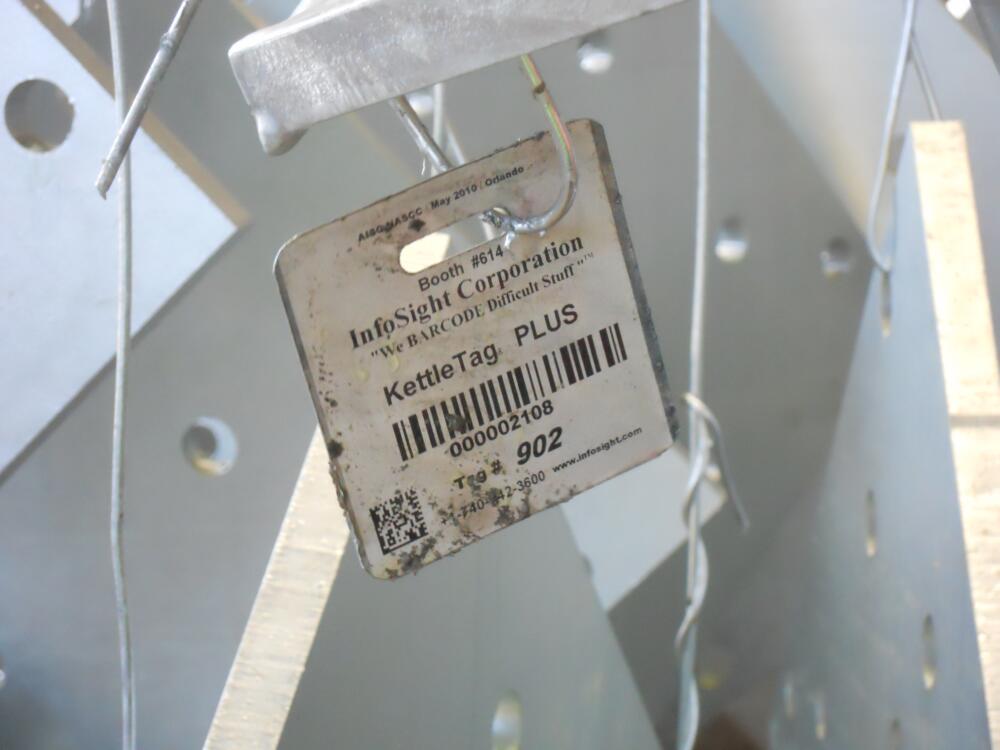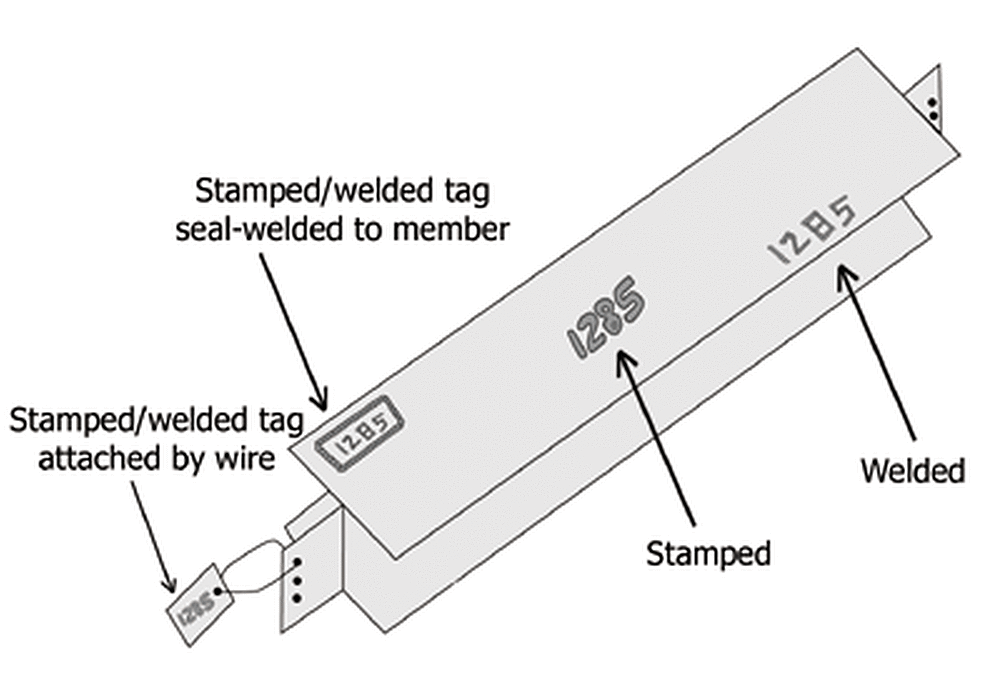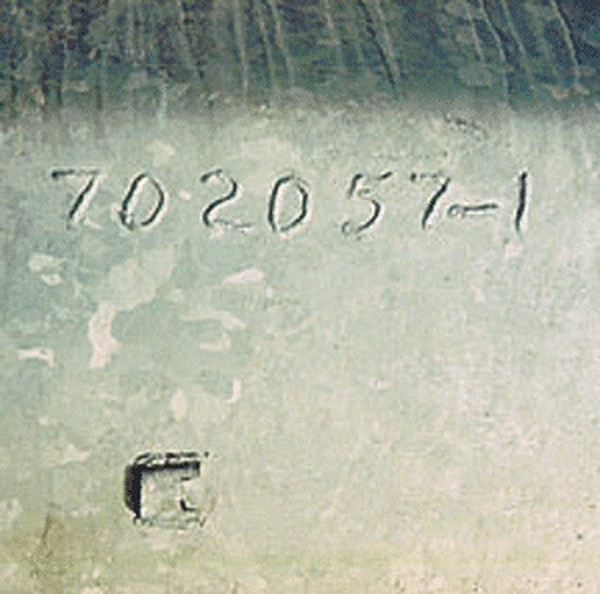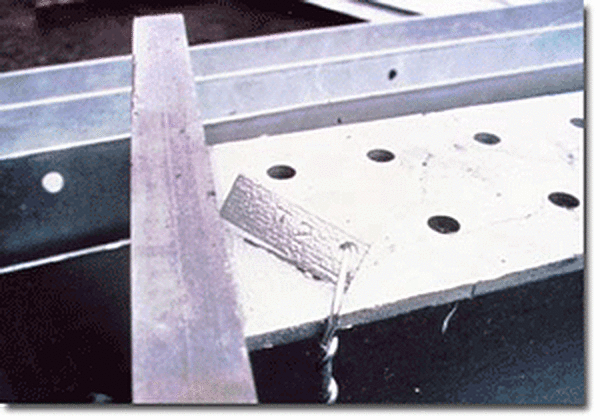Marking Parts
Identification markings on fabricated items should be carefully prepared before galvanizing so they will be legible after galvanizing, but not disrupt the zinc coating's integrity. Cleaning solutions used in the galvanizing process will not remove oil-based paints, crayon markers or oil-based markers, so these products should not be used for applying addresses, shipping instructions, or job numbers. If these products are used, ungalvanized area may result.
There are a variety of products used for marking and identification that are not removed during the chemical cleaning phases of the galvanizing process, including paint, grease and oil-based markers. Therefore, it is advisable to use other forms of identification including:
- Temporary identification - detachable metal tags (metal barcode tags are also available such as Infosight KettleTag®PLUS Metal Tags) or water-soluble paint or markers

- Permanent identification - stamping, weld beads, and deep stencil marking

Temporary Identification
The most common form of temporary identification is the use of detachable tags. Whether barcode tags or stamped/stenciled tags, these are often preferred as they stay affixed to the part throughout the process, but can be removed once the steel is delivered to the job site. Because they are still readable after all phases of the galvanizing process, tags can facilitate turnaround time and eliminate lost parts while not affecting the aesthetics of the steel once erected.
Another increasingly popular temporary identification method is the use of water-soluble paint or markers. The markings will dissolve during the chemical cleaning process at the galvanizer's plant. Unlike other markings, which cannot be removed during the cleaning process, this ensures a fully coated part, but the markings will not be visible after withdrawal from the galvanizing bath. Often this is acceptable and even preferred; however, sometimes identification is still needed when delivered to the job site, and thus this temporary marking method would not be recommended.
Permanent Identification

Where permanent identification is needed, there are three suitable alternatives for marking steel fabrications to be hot-dip galvanized. Each enables items to be rapidly identified after galvanizing and at the job site.
Stamping
Stamp the surface of the item using die-cut deep stencils or a series of center punch-marks. These marks should be placed in a standard position on each of the members, preferably toward the center. They should be a minimum
of 1/2-inch (13 mm) high and 1/32-inch (0.8 mm) deep to ensure readability after galvanizing. This method should not be used to mark fracture-critical members.
Weld Beads
A series of weld beads may also be used to mark letters or numbers directly onto the fabrication. It is essential that all welding flux be removed in order to achieve a quality galvanized coating.
Deep Stenciling
Deep stenciling a steel tag (minimum #12 gauge) and firmly affixing it to the fabrication with a minimum #9 gauge steel wire is another option for identification. The tag should be wired loosely to the work so that the area beneath the wire can be galvanized and the wire will not freeze to the work when the molten zinc solidifies. If desired, tags may be seal-welded directly to the material.
In order to lower costs and minimize turnaround times, abrasive-blast-cleaning required to remove marking products not removed by chemical cleaning solutions should be performed at the fabrication facility.

